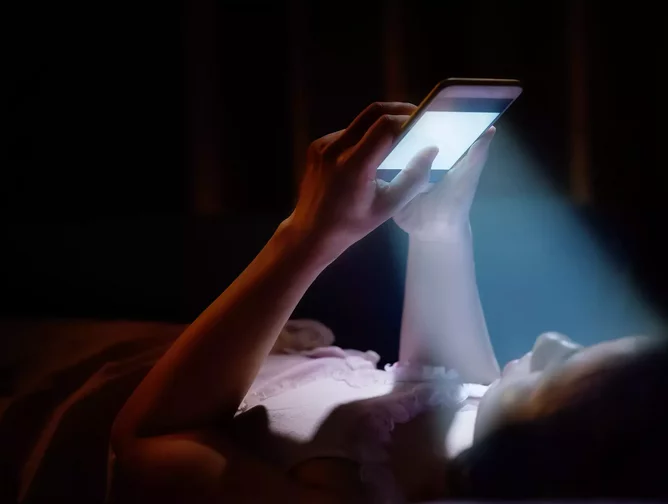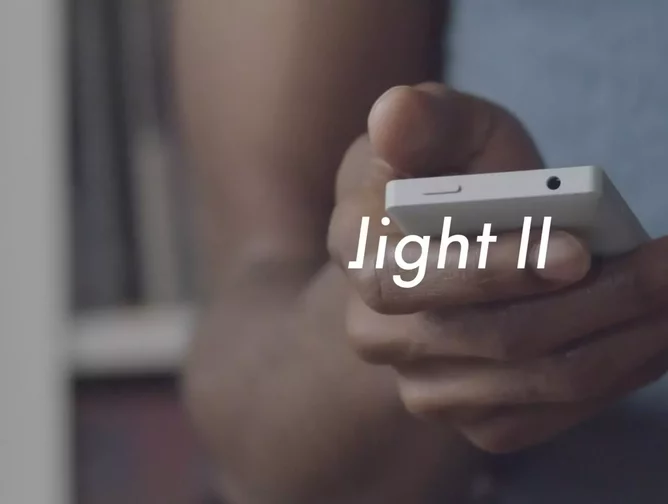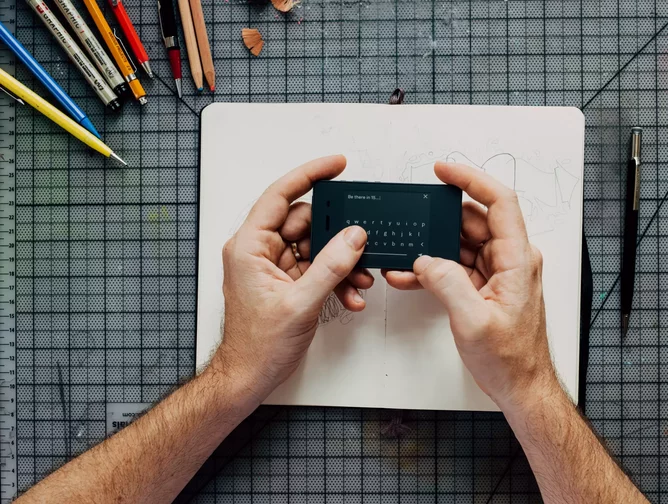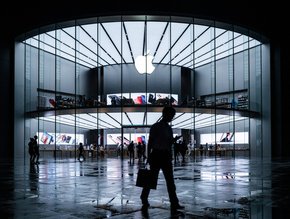Digital Wellness, Phubbing, and Curing your Smartphone Habit

It’s 2:07 am. After feeling the first waves of semi-real dreamy weirdness wash over me, I’m yanked back from the first stages of sleep by two staccato buzzing sounds. Bleary eyed and grumpy, I nevertheless roll over to grab and unlock my phone. I check the notification - an email informing me that a book I bought my father for his birthday is out of stock - and, without thinking, open up my emails to see if I’ve missed anything else. Then, after petulantly deleting a few things that probably require an answer (if it’s actually important, they’ll email again) I open Reddit… scroll, scroll … then I scan Instagram... scroll, scroll... I answer a message from a friend on her lunch break (I live about eight time zones in one direction or another away from just about everyone I know), browse Amazon for a replacement book for my dad, and save a couple of suggested YouTube videos to watch in the morning.
It’s 2:35 am. My wife, disturbed by the light from the screen, tugs her sleep mask back in place from where it’s ridden up from one eye. A few seconds later she sighs, annoyed, and stomps off to use the bathroom. Sheepishly, I set my phone to silent and try to finally get some sleep.
A Very 21st Century Addiction
I don’t think there’s anything very unique about this experience. A study published in the journal Frontiers in Psychiatry earlier this year found that nearly 40% of people between the ages of 18 and 30 qualified as being “addicted” to their smartphones. "Later time of use was also significantly associated with smartphone addiction, with use after 1 a.m. conferring a 3-fold increased risk," noted the report.
The association between heavy smartphone usage and poor sleep isn’t the only detrimental effect that our devices are supposedly having on us. Another study published in Computers in Human Behavior back in 2018 found that people who kept their smartphones outside of their bedrooms for a week while they slept described noticeable improvements in their happiness and quality of life. Speaking to PsyPost, report author Nicola Hughes explained that, when she got her first iPhone, “Before I knew it, the phone had become the source of an ever-present, constant, ongoing conversation with everyone in my life and an endless stream of content which was always beckoning for my attention.”
It’s not hard to see why our smartphones command such a great deal of our attention. Smartphones give us access to the total sum of all human knowledge. They make us into genius mathematicians, political activists, and amateur academics.
They put us in contact (professionally and personally) with people we’d never have access to without their existence. Remember how I said I live about eight time zones away from the overwhelming majority of my family and friends? My phone, piece of life-ruining crap that it is, keeps just about anyone and everyone I know and love - from my hospitalised grandmother to my weekly Dungeons & Dragons group - no more than a few thumb taps away.
Smartphones are a revolutionary, utterly ubiquitous step in the evolution of human communication and experience. Never before have we had such a powerful tool readily available to us at all times. And if it remained just that - a tool - then things would probably be fine.
In May of 2021, a team of anthropologists who spent more than a year documenting smartphone use in nine countries around the world, from Ireland to Cameroon, published a study which posits that human beings now mentally and emotionally exist more in our smartphones than in the physical world. “We have become human snails carrying our homes in our pockets,” said Profesor Daniel Miller of University College London.
“The smartphone is no longer just a device that we use. It has become the place where we live.” - Profesor Daniel Miller, UCL
Miller calls this phenomenon “the death of proximity.” Another team of psychologists who did a similar study in 2018 call it “phubbing”: the act of snubbing someone in a social setting in favour of concentrating on your mobile device. Excessive phubbing, according to the study published in the Journal of Applied Social Psychology, can “significantly and negatively affect perceived communication quality and relationship satisfaction.”
On top of damaging our relationships - even as they connect us with people thousands of miles away - smartphones are also impacting our attention spans, memory, emotional intelligence, and may even be messing up our pinky fingers. The long term, widespread reality of our species-wide dependence on smartphones is more than an addiction; it’s evolutionary culture shock. “We might someday evolve the correct biological hardware to live in harmony with portable supercomputers that satisfy our every need and connect us to infinite amounts of stimulation,” wrote Kevin Roose, a tech reporter for the New York Times and a self-professed smartphone addict. “But for most of us, it hasn’t happened yet.”
Diagnosis: nomophobia
The term Nomophobia is a mashup of the words “no”, “mobile”, “phone”, and “phobia”. It describes a psychological condition where people have a fear of being detached from their smartphones. According to Psychology Today, 66% of adults in the US suffer from nomophobia.

A Cure For Digital Wellness
Smartphone “addiction” in all its forms gets a lot of attention and, in a modern, educated culture where people nevertheless obsess over the healing properties of crystals, practice intermittent fasting, and inject themselves with horse dewormer, it should probably come as no surprise that the cure for a smartphone addiction might sometimes be worse than the disease.
As early as 2017, children in the US as young as 13 were being checked into digital rehab clinics to help them tackle their tech addictions. Today, there are dozens of digital detox centres throughout the world, with varying approaches. There are also movements - like the Digital Sabbath - which encourages people to completely abstain from all technology for one day per week, like a sort of Amish timeshare. James Kelly, founder of Digital Sabbath and CEO of FaithTech, explained his rationale for founding the site after “I realised I was looking at what some random person said on Twitter before saying good morning to my wife." According to Digital Sabbath’s website, “thousands of people” now observe a day of digital rest.
I am, as I think we’ve probably established by now, a heavy screen user. Even setting aside time spent watching TV (I’m currently getting through an average of one season of Grey’s Anatomy every eight days), drawing and reading on my tablet, playing video games, and working on my laptop, I managed to spend a staggering 16% of my life looking at my smartphone over the past seven days. That’s 27 hours and 32 minutes. I spend one day a week. One whole day. Looking at my phone.
I’m not alone, and I’m not even that far past the bell curve. In a study conducted in February 2021, almost half of respondents said that they spent between five and six hours on their phones every day - not including work use.
[Like] is the Drug
Roxy Music references aside, let’s be real here. We’re all addicted to our phones.
However, there’s a risk when it comes to framing things as an addiction. People tend to have an unpleasant tendency to turn things around on the addict, framing continued use of the addictive element of their lives as a crisis of willpower or a lack of perspective. While determination and perspective are very helpful when it comes to breakin out of an addictive pattern of behaviour, those of us looking to kick the habit are up against more than we realise.
“Smartphones are pretty miraculous devices, we are able to bring the entire internet around with us in our pockets, at our side 24/7,” says Joe Hollier, co-founder of Light and maker of the minimalist Light Phone. “The problem is that, we as humans are vulnerable, and many of the apps inside the smartphone are being engineered to use these very vulnerabilities against us because their business model is directly tied to how much time users spend with their product.”
Just about every app inside your smartphone, from social media platforms to games to YouTube, have a vested interest in being as addictive as possible. Their business models - and therefore bottom lines - are directly tied to their users (an accidentally loaded term, given all the addiction talk) spending as much time using as possible. The smartest (some might argue least scrupulous) user experience designers on the planet have spent more than a decade at this point crafting and honing new ways to keep us glued to our phones. From colourful, candy-like icons to the infinite scroll - something its designer, Aza Raskin, has stated publicly that he regrets making - the greatest minds of our generation have created a prison of behavioural suggestion, serotonin, and FOMO.
Users, explains Hollier, aren’t the actual customers of app companies, but rather their products. “Their actual customers are the companies that are paying to advertise or use the data collected. They will show the users the type of content, usually negative leaning or click bait in nature, to keep them glued to their screens.” It’s such a well-constructed cage for our attention that “This leads to smartphone users finding themselves constantly, and unconsciously, pulling out their phones.” The results are wide ranging and kind of uncomfortable to think about. “It’s been detrimental to our attention spans and ability to focus. It’s accelerated our political divides as echo chambers become more and more specific to each user,” says Hollier.
“As humans, we can’t help but feel jealous of the picture perfect, though not likely entirely accurate, lives of those that we follow. Anxiety is a huge side effect many smartphone users are feeling” - Joe Hollier, CEO, Light
Quitting a smartphone habit, it would seem, is a lot harder than you might think.
Also, I must admit that I don’t really have any desire to undergo some brutal digital cleanse. I like being able to stay in touch with people. I like having access to the sum of human knowledge and experience with the push of a button. I like looking at cat gifs. Not to mention the fact that - as one of a growing number of remote employees - cutting technology out of my life would very quickly result in me having to cut out other stuff too, like paying rent, eating food, and such lofty aspirations as “sleeping in a house.”
There must be a middle path.

Going Light
There’s been a huge surge in recent years of people trying to make their smartphones less addictive while retaining their functionality, with solutions that range in severity from putting your phone in greyscale mode to throwing your iPhone in the sea and buying a Nokia “dumb phone” straight out of 1999.
Hollier, who went to university to be an artist, founded his own skateboarding and design company, and has won awards for generally being quite excellent at art and design with an emphasis on technology, might be the answer to my prayers.
His company, Light, made quite a stir a few years ago when they launched the Light Phone - a minimalist handset that walks the line between feature phone, smartphone, and e-reader. It’s (somewhat predictably) gorgeously designed, but Hollier makes it very clear that this is more than a fashion accessory for tech bros on the cyberpunk equivalent of a juice cleanse; it’s a direct response - and hopefully a remedy - to the harm he sees smartphones and social media having on our culture. Smartphone addiction is something he sees “affecting a wide range of users, from older executive businessmen to high schoolers or younger and basically everyone in between.”
“The feeling of FOMO has made it harder for us to enjoy our present lives, especially when things are going well, as our smartphone is showing us other places or things we *could* be doing, instead of actually enjoying the moment as it happens” - Joe Hollier, CEO, Light
The problem is only getting worse in his eyes. “Amongst children, the ability to empathise is dwindling and depression rates are rising,” he adds. “We’ve become so dependent on our phones for so many aspects of our lives, many users fear that they wouldn’t be able to get around a normal life without one.”
He’s also suspicious of digital wellness tools like minimalist UIs and screen time limiters - currently being pushed out by Android and Apple as their best college try at helping people stop being addicted to their technology. “There are apps that try to promote “digital wellness” within the smartphone itself, but they run into the issue that the phone itself is just so powerful,” Hollier says. “A user might delete social media applications from their smartphone to then find themselves unconsciously spending those same hours scrolling a different app, be it internet browser or shopping.” Phones have, he contends, become a “nervous crutch” - something we turn to reflexively, even when they’re not actively trying to get our attention. Just seeing your smartphone, says Hollier, is enough to distract us - it’s very presence reminding us of everything that lies beyond a dormant screen. Somewhat ironically, he adds, “screen time features have been effective in some cases at exposing in a tangible way just how ‘addicted’ we have become.”
The smartphone, says Hollier, “is an infinite hole” with a “dazzling, colourful screen”. With just about every facet of our phones and the software they contain designed to have this effect on us, he says it’s “really hard to imagine a real change coming from within the smartphone itself.”
This is where the Light Phone - soon to be replaced by the Light Phone 2, which is currently available for pre-order - comes in.
It’s a small, remarkably sleek little piece of tech about the size of a credit card with a black and white (by design, the company’s website is keen to stress) e-ink screen like an e-reader. Hollier explains that, in addition to eliminating the candy-shop aesthetic that most smartphone home screens embrace, the Light Phone’s e-ink screen also “does not emit the same stimulating blue light of smartphones.”

The whole experience sounds, to be honest, a little weird. I clung on to my Nokia brick for years before finally biting the smartphone bullet. But, whereas feature phones are holdovers from a time before phones were smart, the Light Phone emphatically isn’t some feature phone with a fancy shell. “Using a Light Phone feels radically different than using a smartphone, on purpose. It’s a slower cadence and a true digital detox when coming from a smartphone,” explains Hollier.
The Light Phone has no third party apps, no web browser - “it will never have social media,” assures the product page. “It's a phone, it calls and texts. There is a customizable menu of simple tools, and a dashboard website to manage everything. There is a headphone jack, bluetooth, and it can be used as a personal hotspot.” And that’s it.
While it might seem weird to pay a decidedly premium price for a phone that does about the same amount of stuff as a $10 burner phone in your average crime drama, the ergonomics and design of the device seem to be about making sure that, once just about everything has been stripped away, what you’re left with is the best possible version of that experience. Also, says Hollier, the more you take away from your digital world, the more you get in the physical one.
“The entire value proposition of ‘going light’ with the Light Phone is around the time and peace of mind that a user is given when the smartphone and access to infinite feeds is removed,” - Joe Hollier, CEO, Light
Hollier explains that Light Phone’s users have reported drops in anxiety, spending more time creating or socialising with loved ones - and doing so with more focus and attention. “That is the core of the experience of using the Light Phone: the things you do outside of the phone, in which the phone itself tries to be as invisible as possible,” he says. “The Light Phone at first can be jarring in that it doesn’t give users the same dopamine that the smartphone apps have been feeding us, but after the initial withdrawal, the experience becomes a profound one, especially in a time in which we experience so much of our lives through hyper-connectivity.”
Life, unplugged
Hollier’s Light Phone isn’t the only device on the market supposed to help us cut our cords and smell the roses a little more. From charming projects like the rotary “un-smartphone” built by Engineer Justine Haupt, to a resurgence in sales of “dumb phones”, there are plenty of ways out there - from buying a new phone to installing a new app, to running naked into the woods on all fours, never to be seen again - of kicking the smartphone habit.
The trick, I think, is to set goals, get help, and take at least one small step towards filing away those digital shackles linking you to your device. Personally, I’m going to set my background to a high definition image of Margeret Thatcher eating the souls of the working class. If it doesn’t kill my dopamine high when I hit the unlock button, nothing will.







